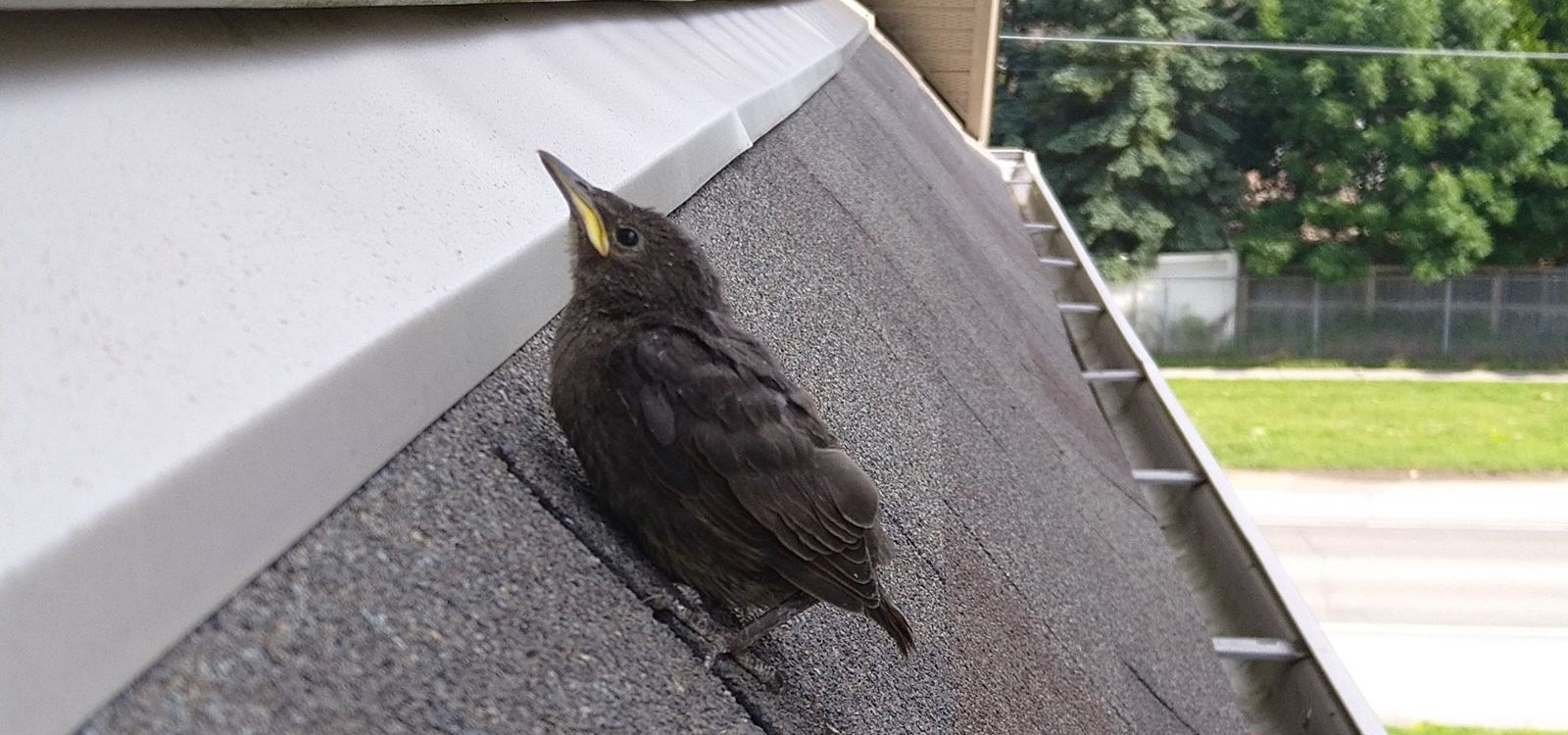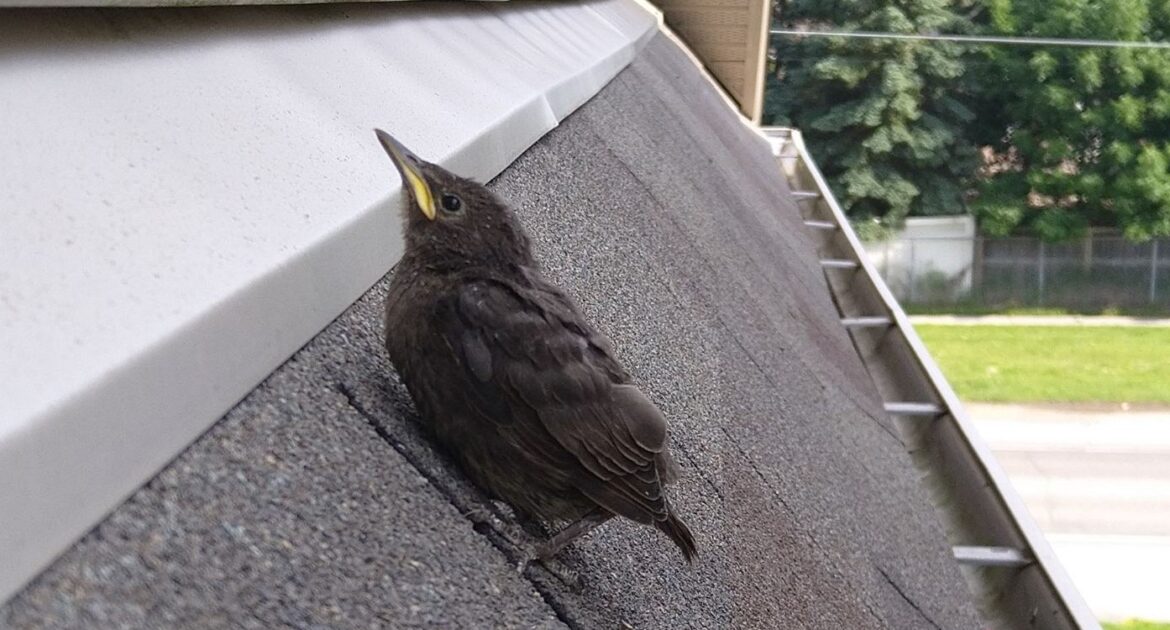You probably expect to see birds outside, not inside your home. But when temperatures drop, birds nesting in attics is common. Some look for warm, hidden spaces—and your attic can seem perfect. That’s why so many families ask the same question each year: what birds are nesting in your attic this winter?
The truth is that several species may sneak inside, each bringing unique challenges. These birds don’t just create noise—they leave behind droppings, feathers, and damage that can affect your home. You might notice scratching, flapping, or chirping at strange hours, which are all signs of unwanted guests.
At Skedaddle Humane Wildlife Control in York Region, we deal with this problem often. We’ve seen how winter bird attic problems grow quickly, from damaged insulation to blocked vents. By learning which common attic bird species are most likely to settle in, you’ll understand the risks and why professional help is always the safest choice.
Common Birds Nesting in Attics
Not every species takes an interest in attics, but some do it more than others. Let’s look at the common attic bird species you might encounter this winter and the issues they bring.
Pigeons
Pigeons are one of the most common birds nesting in attics. They are attracted to warmth and shelter, especially when food sources are close by. Once inside, pigeons build messy nests that clog vents and stain insulation. They also leave large amounts of droppings, which can weaken wood and pose health risks. Their droppings may also carry diseases like histoplasmosis, making the air in your home unsafe to breathe. Over time, these issues can cause expensive repairs and unsafe living conditions if not handled quickly.
Starlings
Starlings are clever and persistent. They squeeze through small openings, then quickly set up nests inside. These nests are often large and block airflow, creating winter bird attic problems that affect heating systems. Starlings are also loud, and their constant chatter can disrupt your sleep or quiet time.
Because they gather in large groups, one pair can soon turn into a noisy colony. Their waste also builds up fast, damaging insulation and creating strong odours. Without proper control, starlings can make your attic uncomfortable and unhealthy.
Sparrows
House sparrows are small, but they cause big problems. They often nest in groups, filling your attic with feathers, twigs, and debris. Sparrows are known to carry parasites, which can spread to other parts of your home.
Even though they’re small, the mess they leave behind is anything but. Their droppings and nesting materials can clog vents, reduce air quality, and attract other pests like mites. Over time, a sparrow infestation can spread quickly, making it difficult to enjoy a safe and clean home environment.
Barn Swallows
Barn swallows usually nest outdoors, but if your attic is easy to reach, they may move in. Their mud nests damage wood, and their droppings pile up quickly. Once they choose a spot, they’re tough to get rid of without our professional help.
Swallows are also protective of their nesting areas and may dive at people who come too close. The buildup of mud and waste not only harms structures but also creates health risks. Left unchecked, barn swallows can turn a quiet attic into a major problem.
Other Attic Bird Species You May See
Sometimes, less common birds also find their way inside. These species may not show up as often, but when they do, they create the same risks.
- Woodpeckers: They usually drill into trees, but in winter they may hammer on your home, creating entry points into your attic. Once inside, the noise doesn’t stop.
- Robins: Most migrate south, but some stick around. If your attic is warm, robins may build simple nests there.
- Finches: Small but social, finches may enter attics in flocks. A group of finches can fill your attic with nests and droppings in no time.
- Doves: These birds are quiet but messy. Their nests can block vents and create dangerous airflow problems.
Each of these species counts as a common attic bird problem in York Region, and they all require expert removal.
Winter Bird Attic Problems
You may think a bird or two isn’t a big deal. But once they get inside, the problems multiply. Winter bird attic problems can affect your home in several ways:
- Health Risks: Droppings carry bacteria and parasites that are unsafe for people and pets. When droppings dry out, the particles can turn into dust that spreads through the air. Breathing this in can make you sick, and pets that walk through droppings can spread germs around the house.
- Fire Hazards: Nesting materials like straw, twigs, and feathers can block vents or land near wires. If these materials touch a hot surface or spark, they can catch fire. This makes even a small nest a serious danger for your home.
- Damage to Insulation: Birds pull and shred insulation for nests, making your heating less efficient. Gaps in insulation let heat escape, so your furnace has to work harder. This leads to higher energy bills and less comfort during the winter.
- Noise: Chirping, scratching, and flapping are hard to ignore, especially at night. The constant sound can make it tough to sleep or relax in your own home. Over time, the stress of the noise can affect your family’s comfort and peace of mind.
Birds nesting in attics aren’t just a nuisance—they can lower air quality and damage your property. Left alone, one nest often leads to several, and soon you have a full infestation.
Why Birds Choose Attics
Birds don’t pick attics by accident. They look for:
- Warmth: Attics provide shelter from the cold.
- Safety: Fewer predators reach them indoors.
- Easy Access: Loose shingles, vents, or gaps make great entry points.
- Nesting Space: Attics are quiet and undisturbed, making them perfect for raising young.
When you think about it, your attic checks all the boxes for a bird looking for a safe winter home. That’s why prevention and professional help are so important.
Quick Facts About Attic Birds
- Pigeons can lay eggs year-round, meaning their nests grow quickly.
- Starlings are excellent mimics, so their noisy calls often sound like other birds.
- Sparrows usually return to the same nesting spot year after year.
- Even one pair of birds can leave dozens of droppings in a single night.
These facts show why the risks of birds nesting in attics should never be ignored.
Bird Removal Services
When you discover birds in your attic, your first reaction may be frustration or worry. The good news is that you don’t have to face it alone. At Skedaddle, we focus on humane, safe removal methods that work for both you and the animals.
We use one-way doors that allow birds to leave safely but stop them from coming back in. Once the attic is clear, we seal entry points and secure weak spots so the problem doesn’t return. Our team also checks for damage and helps you protect your home from future risks.
Why You Should Call Right Away
Delaying action only makes winter bird attic problems worse. Nests grow, droppings spread, and damage increases the longer the birds stay. By calling us quickly, you stop the problem before it grows into a larger, more expensive issue.
Birds nesting in attics are more than just an annoyance—they can harm your home and health. From pigeons and starlings to sparrows and swallows, the common attic bird species in York Region know how to take advantage of unprotected spaces. Their nests, droppings, and constant noise remind you that they don’t belong indoors.
At Skedaddle Humane Wildlife Control in York Region, we help families solve winter bird attic problems in a safe and humane way. Our team focuses on prevention, long-term protection, and keeping your home comfortable.
Request an estimate today and let us help you deal with birds nesting in attics before the problem gets worse.




